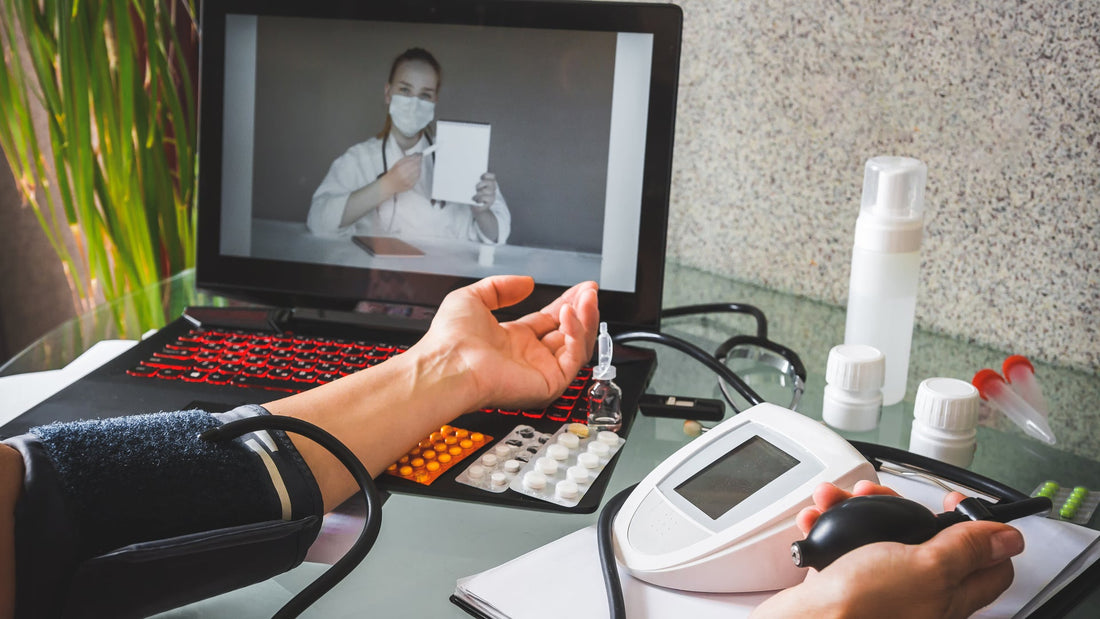
Transforming Healthcare with Patient Monitoring Innovations
Share

The healthcare industry is undergoing a profound transformation, and at the heart of this change lies the patient monitoring market. With advancements in technology, shifting demographics, and the growing demand for personalized care, patient monitoring has become a critical element in improving healthcare outcomes. This blog explores the latest trends and innovations reshaping the patient monitoring market, highlighting the industry’s increasing importance and investment potential.
1. Remote Patient Monitoring (RPM): The Future of Healthcare at Home
One of the most prominent trends in patient monitoring is the rise of Remote Patient Monitoring (RPM). The COVID-19 pandemic accelerated the adoption of RPM solutions, underscoring the importance of providing healthcare from the comfort of patients' homes. RPM allows patients, particularly those with chronic conditions like diabetes or hypertension, to be continuously monitored without the need for frequent hospital visits.
In August 2023, Iron Bow Healthcare Solutions launched a comprehensive RPM solution powered by Carium. This platform enables healthcare teams to remotely monitor patients, offering device management, clinical integration, and access to virtual care. With RPM, patients can receive timely interventions when necessary, improving their health outcomes while reducing healthcare costs. This trend highlights a shift towards more convenient, patient-centered care—an area that is ripe for investment as the market for home healthcare continues to expand.
2. Wearable Technology: Advancing Precision in Health Monitoring
Wearable technology is transforming how individuals track their health. Once seen primarily as fitness tools, wearable devices such as smartwatches and fitness trackers are becoming increasingly sophisticated and crucial in healthcare monitoring. These devices continuously monitor key health metrics, enabling individuals and healthcare professionals to identify potential health issues before they escalate.
For example, in December 2022, Mindray, a global leader in advanced medical devices, unveiled the mWear™ system—a breakthrough wearable patient monitoring solution. This device allows for continuous patient condition monitoring, empowering healthcare providers to deliver more precise and timely care. With features like heart rate tracking, ECG readings, and more, wearables are solidifying their place in the healthcare ecosystem, offering both preventive and therapeutic benefits. As the wearable market expands, investors should look toward companies innovating in this space, particularly those incorporating sensors that can monitor a wider range of health metrics.
3. Artificial Intelligence (AI) and Machine Learning (ML): Revolutionizing Patient Data Analysis
AI and Machine Learning (ML) are playing a transformative role in patient monitoring by enabling the analysis of vast amounts of health data in real-time. These technologies allow for early disease detection by identifying subtle changes in vital signs that could indicate the onset of health issues. As a result, healthcare providers can intervene proactively, improving patient outcomes and reducing unnecessary hospitalizations.
In March 2023, Zephyr AI, Inc. partnered with KangarooHealth, Inc. to develop a predictive solution that enhances care for patients with chronic conditions. By combining Zephyr AI's machine learning technology with KangarooHealth's remote monitoring platform, the companies are creating a solution that helps clinicians make data-driven, informed treatment decisions. As AI and ML continue to evolve, they promise to reshape the future of healthcare, making it more efficient, personalized, and precise—an exciting development for investors looking to capitalize on the future of healthcare innovation.
4. Telehealth and Telemedicine: Connecting Patients and Providers
The integration of patient monitoring with telehealth and telemedicine is revolutionizing healthcare delivery. This trend, accelerated by the COVID-19 pandemic, allows patients to use wearable devices or at-home monitoring equipment to track their health metrics, while healthcare providers can access this data remotely in real time. This connection enables healthcare providers to offer timely care and interventions without requiring patients to visit the clinic, reducing the strain on healthcare systems.
In August 2022, Teladoc Health, a leading provider of telemedicine services, partnered with Cloud DX, a remote patient monitoring platform, to improve remote care capabilities across Canada. The collaboration enhances the existing RPM services by incorporating Teladoc Health's expertise in virtual healthcare, further cementing the role of telemedicine and RPM in the future of healthcare. Investors should keep an eye on companies making strides in telehealth, as the demand for remote care continues to grow, particularly in underserved areas where in-person visits may be limited.
5. Innovations in Sensors and Connectivity: The Backbone of Real-Time Monitoring
The development of advanced sensor technology and robust connectivity options, such as the widespread adoption of 5G networks, is driving the effectiveness of patient monitoring devices. These innovations ensure that healthcare professionals receive real-time, accurate data that allows for faster decision-making and timely interventions.
In September 2023, Boston Children’s Hospital announced the implementation of a cutting-edge 5G network, which will serve as the backbone for future patient monitoring technologies. This scalable infrastructure will enable remote monitoring in patients' homes and integrate AI-driven prioritization for specialists. By leveraging 5G networks, healthcare providers can reduce latency and improve the efficiency of care delivery, making real-time monitoring more reliable and accessible. With the adoption of 5G, the patient monitoring market is poised for substantial growth, creating exciting investment opportunities in companies developing or incorporating these advanced technologies.
Conclusion: The Future of Patient Monitoring and Investment Opportunities
As the healthcare landscape continues to evolve, patient monitoring is becoming an essential part of the system. With innovations in remote patient monitoring, wearable devices, AI, telehealth, and sensor technologies, healthcare is becoming more accessible, efficient, and patient-centric. These trends are transforming how healthcare is delivered, from preventive care to real-time health interventions.
For investors, the patient monitoring market represents an exciting opportunity. Companies at the forefront of these technological advancements—whether in RPM, wearable devices, AI-driven analytics, or connectivity solutions—are positioned for significant growth. With healthcare increasingly shifting toward remote and personalized care, now is the time to invest in companies leading the charge in patient monitoring innovation.
The future of healthcare lies in innovation, and patient monitoring is leading the way. By investing in this rapidly evolving market, stakeholders can play a vital role in shaping the next generation of healthcare delivery, driving improved patient outcomes, and reducing overall healthcare costs.